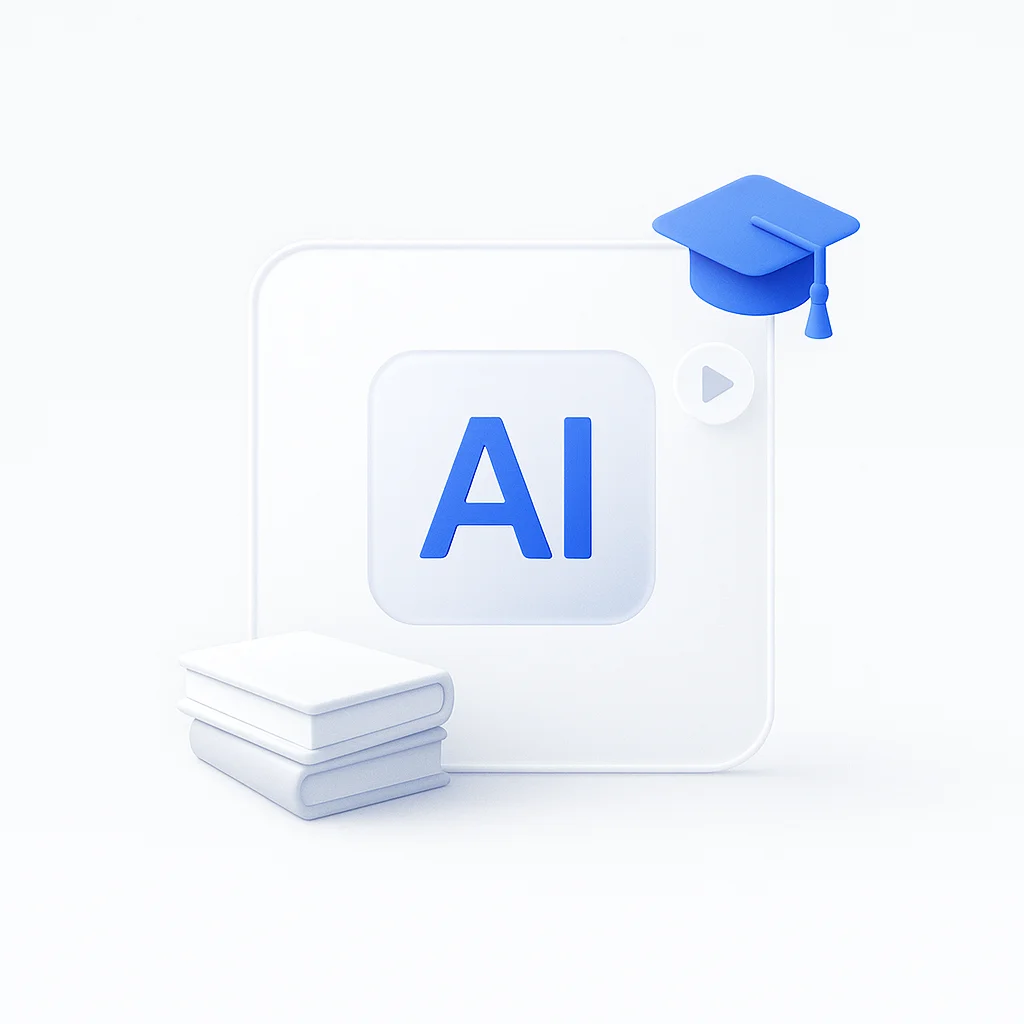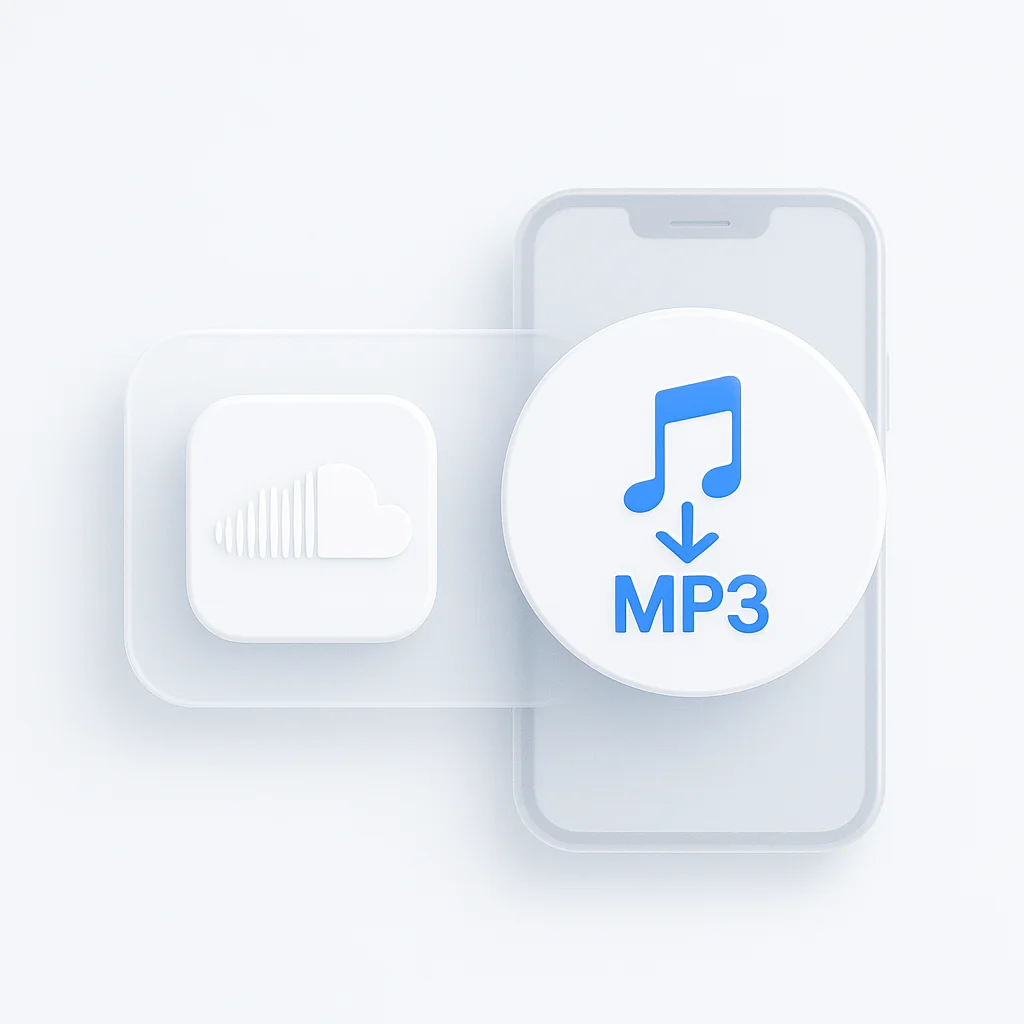人工知能(AI)は、パーソナライズされた体験とインタラクティブなツールを提供することで、教育を変革しています。AIは生徒を未来に備えさせ、教育を向上させます。この記事では、生徒と教師向けの最高の無料AIツールを探ります。
一目でわかるトップツール
早速本題に入り、トップツールをご紹介します。
| 名前 | 長所 | 短所 | 最適な用途 | 評価 |
|---|---|---|---|---|
| ScreenApp | 高品質のビデオ録画、簡単な文字起こしと要約 | 無料版は機能制限あり | ビデオ要約、ノート作成 | 5/5 |
| Claude 3 | 革新的、インタラクティブ、概念をわかりやすく説明 | 指導と入力が必要 | 学習仲間、クリエイティブライティング、リサーチ | 4/5 |
| IBM Watson Education | データ駆動型の洞察、パーソナライズされた学習 | 複雑なインターフェース | アダプティブラーニング、生徒のパフォーマンス分析 | 4/5 |
| Duolingo | インタラクティブ、楽しい、アダプティブなレッスン | 無料版には広告あり | 言語学習 | 4/5 |
| Quizlet | カスタマイズ可能、多用途な学習モード | 基本的な無料版 | 学習補助、フラッシュカード | 4/5 |
| Jenni.ai | AIコンテンツ生成、本文引用、盗用チェッカー | 学術論文作成 | 4/5 | |
| Knowt | AI搭載のフラッシュカード、魅力的な学習モード | 学習補助、テスト対策 | 4/5 | |
| Edmodo | コミュニティ主導、直感的なデジタル教室 | インターネットが必要 | オンライン学習、コラボレーション | 4/5 |
| Grammarly | 包括的なライティングフィードバック、語彙力強化 | プレミアム版には盗用チェッカーあり | ライティング改善 | 4/5 |
| Quill | インタラクティブなライティング練習、リアルタイムフィードバック | ライティングのみに焦点を当てている | ライティング改善 | 4/5 |
生徒と教師向けの最高の無料AIツール19選
1. ScreenApp - ビデオを代わりに見てくれる
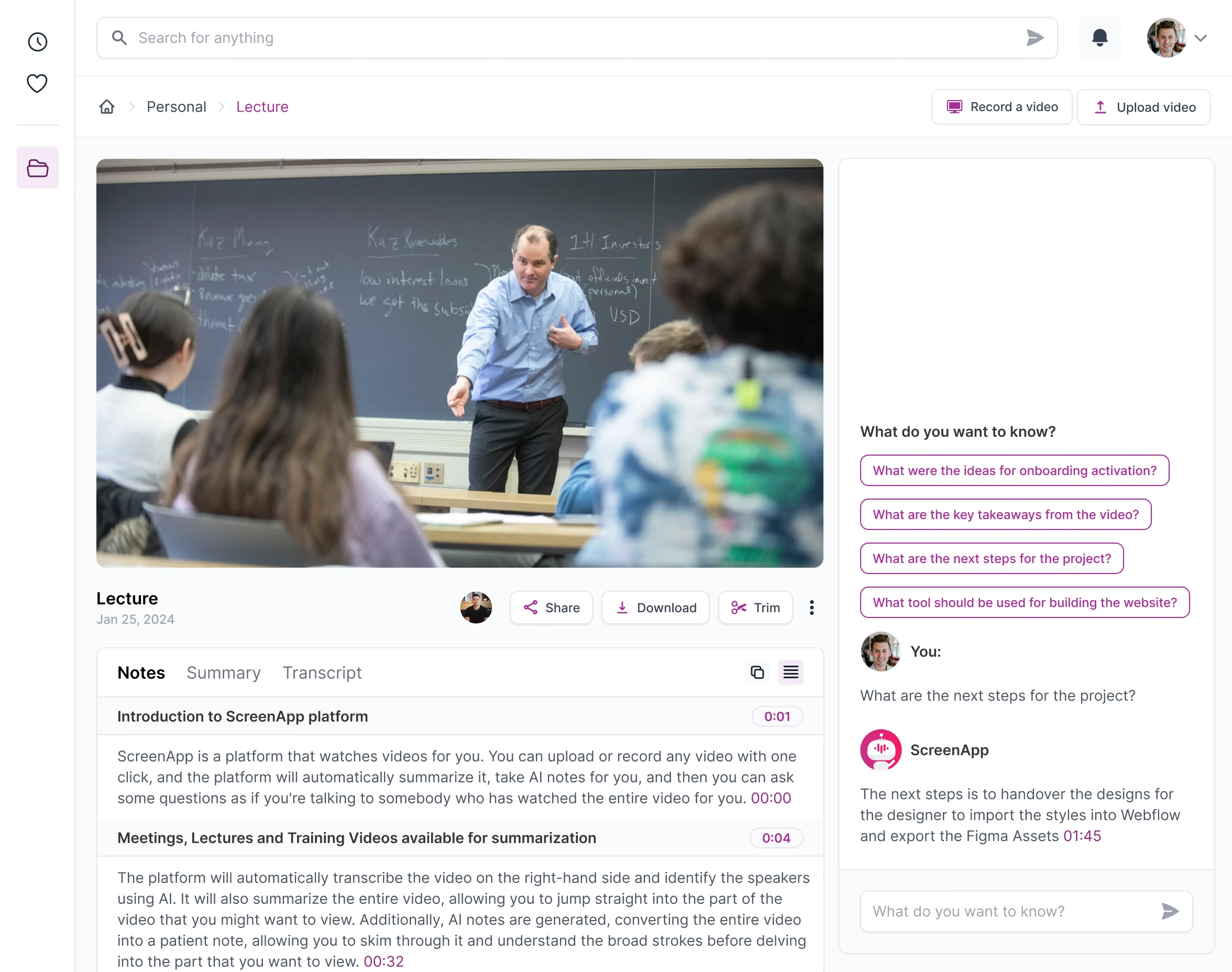
説明と機能
ScreenAppは、教育用のノートを作成するためのAI搭載のオンラインツールです。デジタルコンテンツを教育やその他の専門的な目的のための貴重な知識の貯蔵庫に変換するように設計されています。ScreenAppは、以下を含む包括的な機能スイートを提供します。
- オプションのウェブカメラ、デスクトップ、マイク、システムオーディオキャプチャによる無制限の画面録画
- 120以上の言語をサポートするビデオの文字起こし
- 長いレッスンや講義のアクセシビリティを向上させるためのビデオ要約とAIノート作成
- GPT対応のビデオ要約、単純化、比較、および洞察生成
- 録画と文字起こしの安全な保存と共有
教育における利点と潜在的な用途
ScreenAppは、教育に幅広い利点を提供します。
- パーソナライズされた学習: ScreenAppを使用すると、教育者は生徒の個々のニーズとペースに合わせて、パーソナライズされた学習パスを作成できます。AIツールは、問題に対する生徒の反応を分析し、難易度を自動的に調整して、学習プロセスを強化するためのリアルタイムフィードバックを提供できます。
- 魅力的なコンテンツ: ScreenAppを使用して、ビデオチュートリアル、シミュレーション、プレゼンテーションなど、魅力的でインタラクティブな学習体験を作成できます。AI機能を使用して、要約、重要なポイント、その他のインタラクティブな要素でコンテンツを強化できます。
- アクセシビリティ: ScreenAppの文字起こしとインタラクティブな機能により、障害のある生徒や英語学習者にとってコンテンツへのアクセスが容易になります。
- コラボレーション: ScreenAppを使用すると、録画と文字起こしを生徒や同僚と簡単に共有できるため、コラボレーションとディスカッションが促進されます。さらに、生徒は特別な学生割引を利用して、プレミアム機能にアクセスできます。
2. Claude 3

説明と機能
Claude 3は、Anthropicによって開発された高度な大規模言語モデル(LLM)です。複雑な指示を処理し、複数のクリエイティブなテキスト形式を生成し、有益で論理的な回答を提供する能力で際立っています。Claude 3は、概念を段階的に説明し、特定のユーザーの指示に合わせて応答を調整することが特に得意です。
教育における利点と潜在的な用途
- 学習仲間: Claude 3は、包括的な学習パートナーとして機能します。練習問題を作成したり、複雑なトピックの要約を提供したり、理解しやすい言葉で難しい概念を明確にしたりできます。
- クリエイティブライティングアシスタント: 生徒はClaude 3とブレインストーミングしたり、下書きに関するフィードバックを得たり、コンテンツ作成にAIを使用することで、ライターズブロックを克服するのに役立ちます。AIは、ライティングスタイル、構造、さらには関連する比喩を提案できます。
- リサーチツール: このAIは、オンライン情報をふるいにかけて要約を提示したり、引用を支援したり、学術プロジェクトの信頼できる情報源を特定したりできます。
考慮事項他のAIツールと同様に、Claude 3には指導と入力が必要であることを覚えておくことが重要です。生徒は、批判的思考、事実確認、および独自の独立した理解の開発の代わりとして、その出力に完全に依存すべきではありません。
3. IBM Watson Education
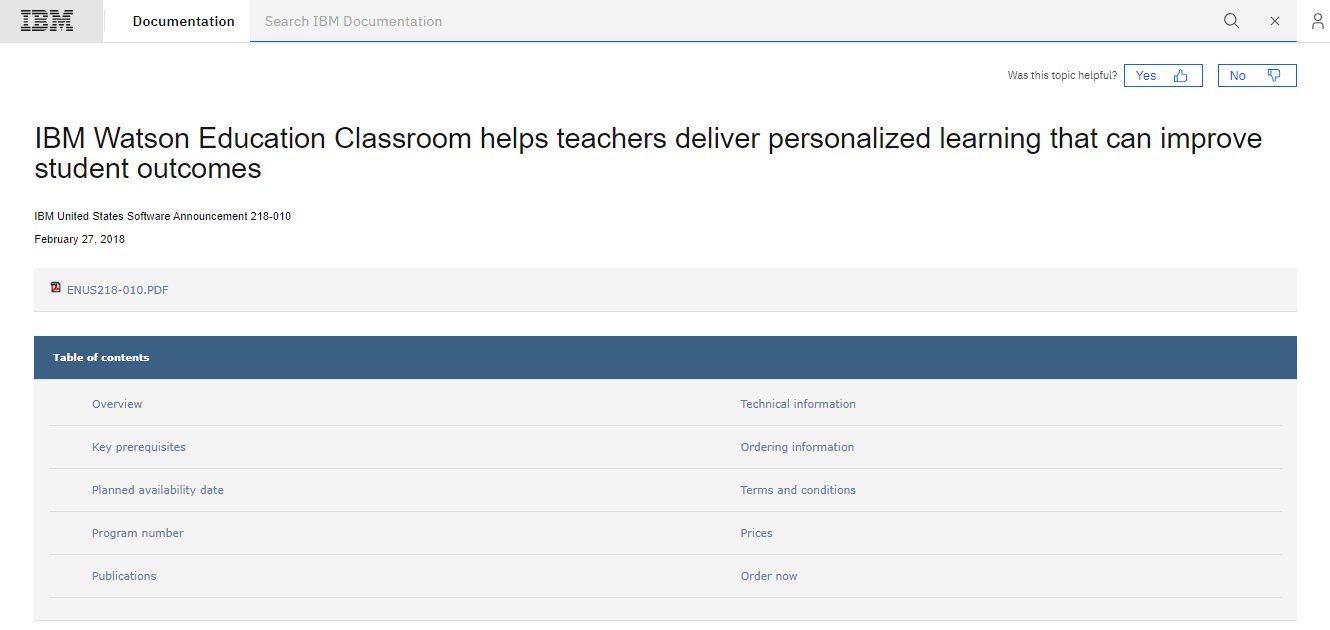
説明と機能:
IBM Watson Educationは、教育の状況を変革するように設計されたAI搭載のソリューションスイートです。Watson Educationは、認知テクノロジーを統合してパーソナライズされた学習体験を提供し、生徒の能力とカリキュラムの要求の間のギャップを埋めます。コンテンツナビゲーションシステム、AIチューター、生徒のパフォーマンスを評価するためのインテリジェント分析など、いくつかのツールを提供します。
教育における利点と潜在的な用途:
IBM Watson Educationは、生徒と教師の両方に多くの利点をもたらします。生徒にとって、Watson Educationのパーソナライズされた学習アプローチにより、すべての学習者が独自の学習スタイルとペースに合わせて調整された注意を確実に受けられるようにします。生徒の反応を分析することにより、Watsonは困難な領域を特定し、コンテンツ配信を調整し、理解を向上させるための的を絞った練習を提供できます。教育チャットボットを通じて、生徒はAI駆動型の個別指導と対話することもでき、学習がより魅力的でアクセスしやすくなります。AI生成されたLinkedInの顔写真は、洗練されたプロフェッショナルなプロフィール画像で、生徒や専門家が強力なオンラインプレゼンスを構築するのに役立ちます。
教育者にとって、Watson Educationは生徒のパフォーマンスに関するデータ駆動型の洞察を提供し、学習ギャップの早期特定を可能にし、タイムリーな介入を促進します。EDIサービスとの統合を通じて、教育システム間のシームレスなデータ交換を保証し、生徒情報の正確性と即時性を向上させます。AIチューターは、課題の採点などの反復的なタスクの負担を軽減することもできるため、教師は教育戦略の強化により集中できるようになります。
教室では、Watson Educationを使用して、より魅力的で効果的な学習環境を作成できます。個々の学習者プロファイルに適応する能力により、差別化された指導のための強力なツールとなり、教育における公平性と包容性を促進します。
4. Duolingo - AI搭載の言語学習アプリ
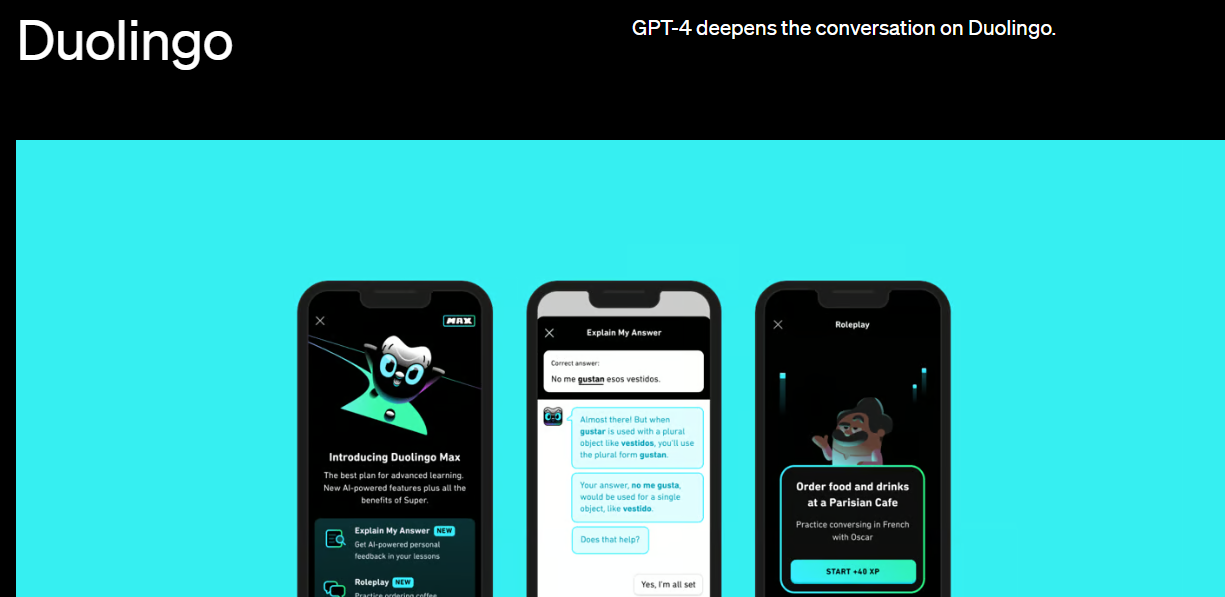
説明と機能:
Duolingoは、学習をゲームのような体験に変える無料のAI搭載の言語学習アプリです。基礎から始まり、徐々に複雑になる30以上の言語でレッスンを提供します。各レッスンには、スピーキング、リスニング、翻訳、多肢選択式の課題がさまざまに含まれています。DuolingoはAIを使用して、ユーザーの進捗状況を追跡し、レッスンを習熟度に合わせて調整し、学習体験を真にパーソナライズします。
教育における利点と潜在的な用途:
Duolingoは、生徒が新しい言語を学んだり、既存の言語スキルを向上させたりするための魅力的でインタラクティブな方法を提供します。AI対応のプラットフォームは、学習者のニーズに継続的に適応し、弱点を特定し、改善が必要な領域に焦点を当てます。これにより、Duolingoは個人学習または補足学習に最適なツールになります。
教室環境では、Duolingoを使用して、従来の言語教育方法を補強できます。生徒に追加の練習を提供したり、クラスで教えられたことを強化したり、生徒が自分のペースで語彙と文法のスキルを構築するのに役立ちます。さらに、ゲーム化されたアプローチは、生徒の関心とモチベーションを刺激し、言語学習をより楽しく、それほど困難にしないようにすることができ、これらはまさに教育研究者が高等教育における学生の定着率の向上に関連付けているエンゲージメント要素です。
5. Quizlet - AI強化されたフラッシュカードと学習セット
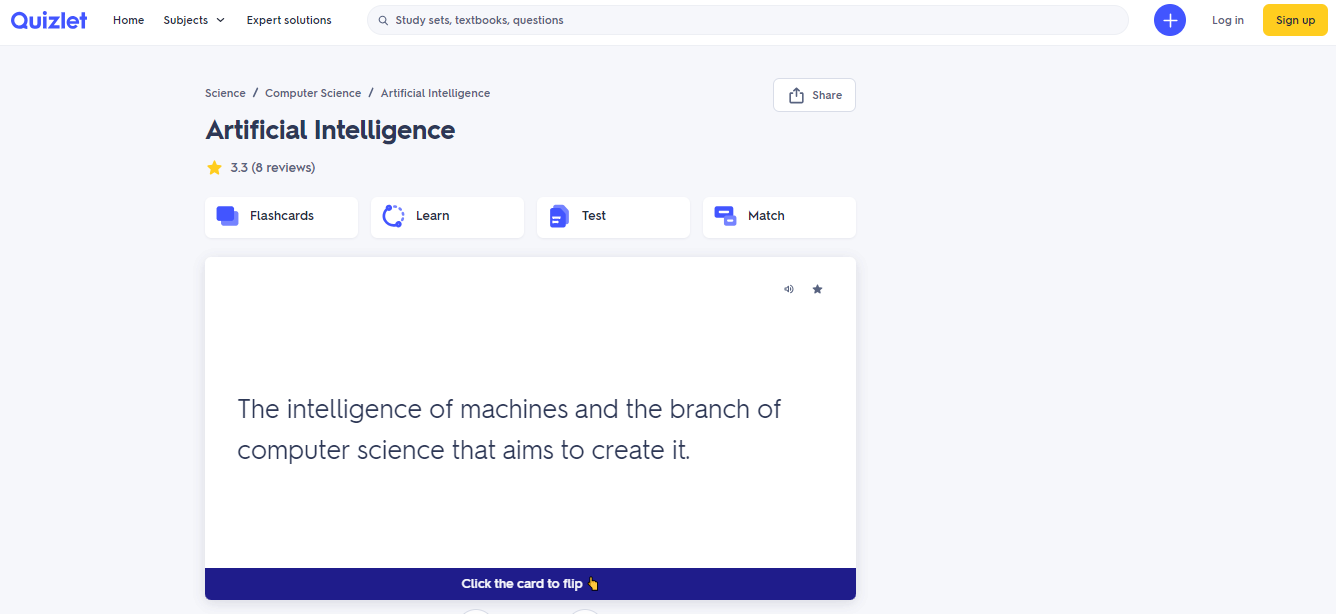
説明と機能:
Quizletは、AIを使用してデジタルフラッシュカードと学習セットツールを強化するオンライン学習ツールです。さまざまな学習スタイルに対応するために、フラッシュカード、テスト、ゲームなど、さまざまな学習モードを提供します。QuizletのAI搭載「学習」機能は、学習者の過去のパフォーマンスとテスト日までのタイムラインに基づいて、カスタマイズされた学習計画を生成します。
教育における利点と潜在的な用途:
Quizletは、幅広い科目をサポートできる多用途ツールであり、生徒と教師の両方にとって価値があります。生徒にとって、Quizletは、保持とテストのパフォーマンスを向上させるのに役立つ柔軟でパーソナライズされた学習ツールを提供します。そのゲームのような要素は、勉強をより魅力的で退屈にならないようにすることができます。
教師にとって、Quizletは、カリキュラムに合わせたカスタム学習セットを作成するための優れたリソースです。これらのセットは、レビュー、練習、または宿題のために生徒と共有でき、教室での学習を強化するための楽しく効果的な方法を提供します。
教室では、Quizletをアクティブラーニング戦略の一部として使用できます。グループ活動、クラスコンテストを促進したり、クイックレビューセッションのツールとして使用したりできます。その適応学習機能により、教室内の多様な学習ニーズを満たす、差別化に適しています。
6. AIScreen
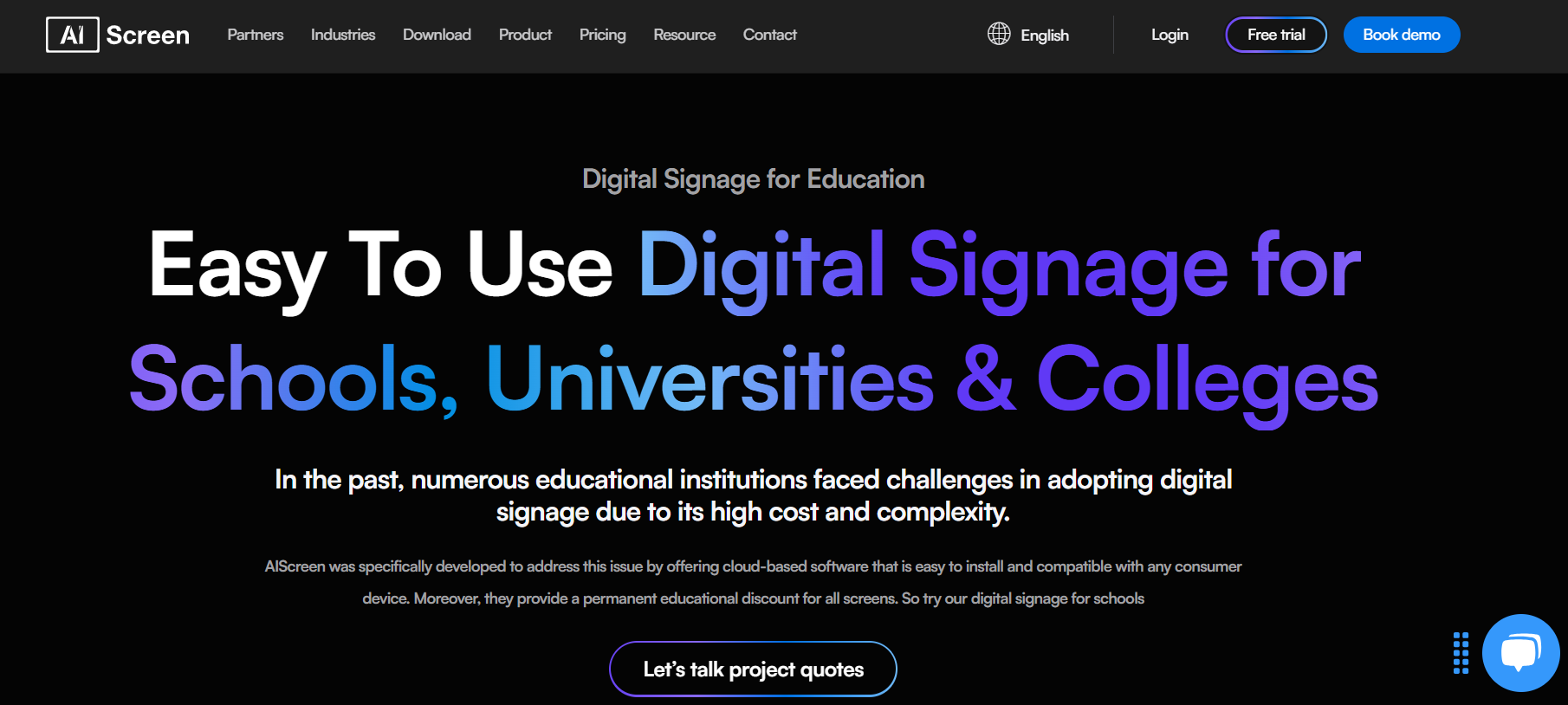
説明と機能
AIScreenは、組織が視覚的にコミュニケーションする方法を変革するように設計された高度なデジタルサイネージプラットフォームです。使いやすいインターフェース、スケーラブルな展開オプション、堅牢なコンテンツ管理システムで知られるAIScreenにより、画面ネットワーク全体でリアルタイムのコンテンツ更新が可能になります。学校から小売店、医療施設まで、機関がターゲットを絞った動的なコンテンツを簡単に配信するのに役立ちます。
教育における利点と潜在的な用途:
教室のコミュニケーションエンハンサー:AIScreenは、毎日のスケジュール、お知らせ、緊急アラートを学校全体の画面に表示し、生徒とスタッフにリアルタイムで情報を提供できます。
エンゲージメントブースター:生徒の成果、ランチメニュー、または動機付けの引用を紹介することにより、教育者はよりつながりのある刺激的な学校環境を作成できます。
管理効率:集中管理により、学校管理者はどのコンテンツをどの画面にいつ表示するかを簡単に管理できるため、時間を節約し、印刷コストを削減できます。
学習サポートツール:このプラットフォームは、廊下のディスプレイや教室の画面で、語彙、歴史的事実、数学の課題など、教育コンテンツを1日を通して強化するために使用でき、学生のエンゲージメントと定着率の向上を目指す数学の個別指導プラットフォームに追加する価値があります。
コミュニケーションの近代化を目指す学校向けに、K-12学校向けのデジタルサイネージソフトウェアは、教育ニーズを満たすための調整されたソリューションを提供します。
考慮事項:AIScreenを最大限に活用するには、学校は明確なコンテンツ戦略を作成し、更新を監督するコンテンツマネージャーを割り当てる必要があります。プラットフォームは配布を簡素化しますが、慎重な計画により、コンテンツがタイムリーで関連性があり、生徒とスタッフの両方にとって魅力的な状態を維持できます。
7. Jenni.ai
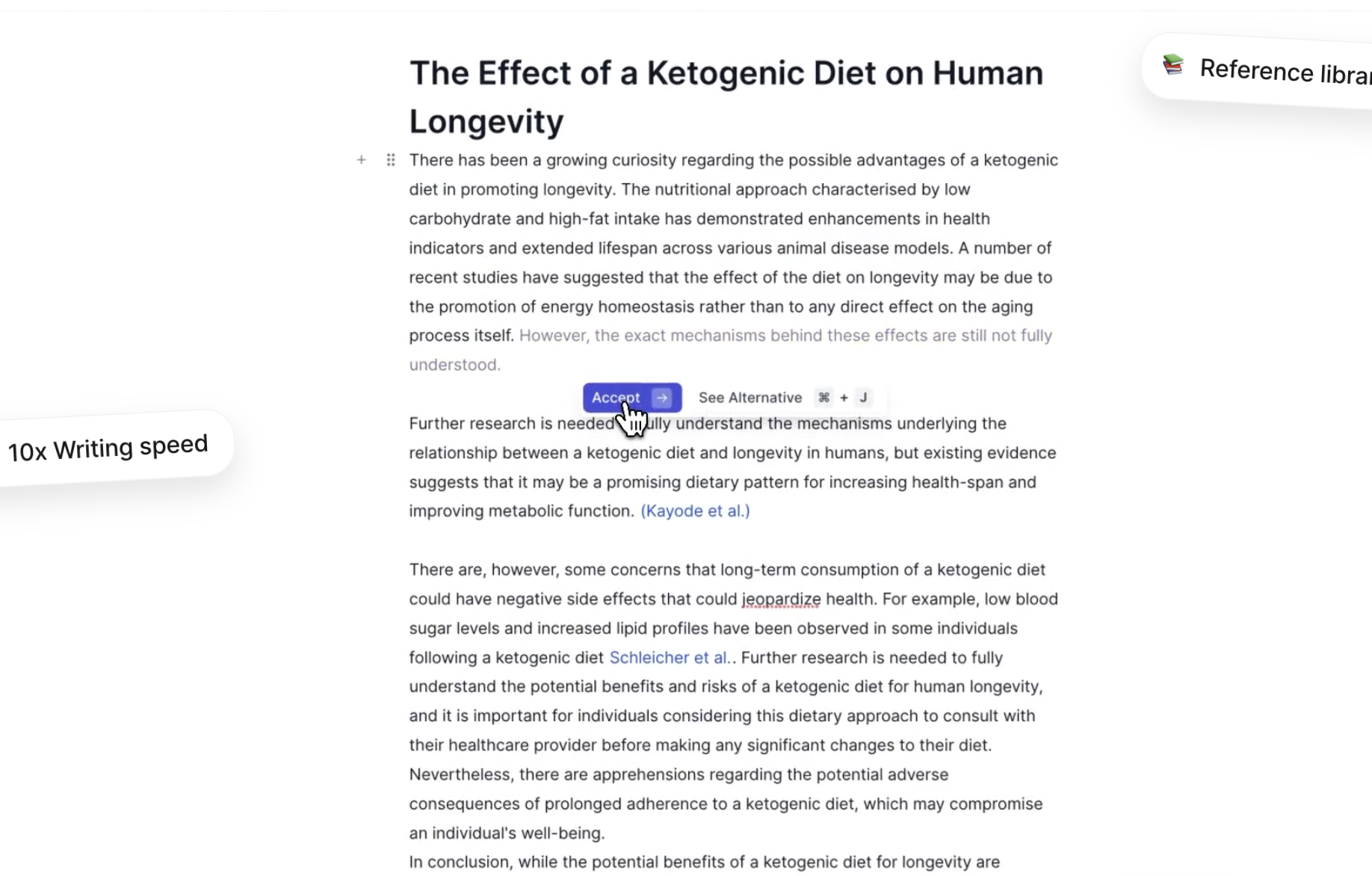
説明と機能:
Jenni.aiは、学術論文作成に特化したAIライティングアシスタントです。このツールは、高度なAIテクノロジーを利用して、アイデアを生み出し、文法を改善し、関連する引用を作成します。主な機能は次のとおりです。
- AI搭載のコンテンツ生成: Jenni.aiは、段落を提案したり、論文を作成したり、執筆を強化するために反論を生成したりできます。AI検出器も使用できます。AI検出器を使用すると、AIコンテンツが大幅に強化され、より魅力的になるだけでなく、トーンとフローもより自然になります。
- 本文引用: さまざまなスタイル(APA、MLAなど)の引用のフォーマットを支援し、時間を節約し、学術的な正確性を確保します。
- 盗用チェッカー: Jenni.aiは、盗用の可能性があるテキストにフラグを立てることで、作品の独創性を保証するのに役立ちます。
教育における利点と潜在的な用途:
Jenni.aiは、学術研究に関与する生徒と教育者にいくつかの利点を提供します。
- 学生サポート: Jenni.aiは、特に複雑または調査の多い作品の場合、学生の執筆プロセスを簡素化します。ライターズブロックを克服したり、文の構造を磨いたり、学術的なスタイルを維持したりするのに役立ちます。
- 教師向けリソース: 教師はJenni.aiを使用して、生徒の執筆を指導し、焦点を絞ったフィードバックを提供し、優れた学術論文の例を提供できます。引用支援と盗用AIチェッカーは、適切な研究習慣の開発もサポートします。
- 教室での統合: Jenni.aiは、ツールからの提案の助けを借りて、生徒が互いにアイデアを生み出したり、執筆を洗練させたりするワークショップや共同プロジェクトで使用できます。
8. Knowt
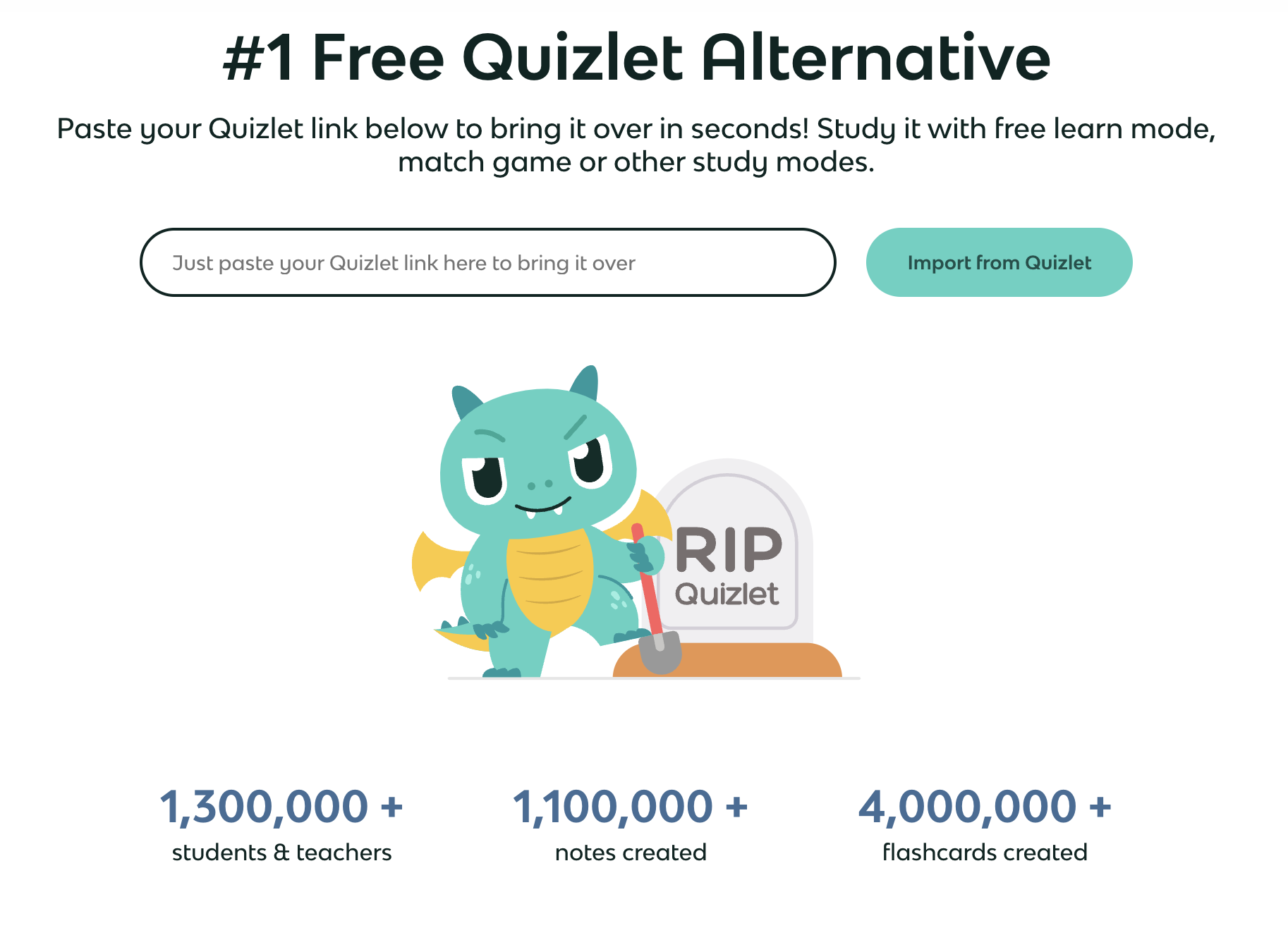
説明と機能:
Knowtは人工知能を活用して、学習セッションを合理化し、知識の定着を最適化します。この多面的なプラットフォームにより、生徒は従来のフラッシュカードを作成したり、AIヘルパーを使用して、ノート、教科書、または講義ビデオからフラッシュカードを即座に生成したりできます。フラッシュカードに加えて、Knowtは、さまざまな学習スタイルに対応するために、複数のスペース反復学習モード、練習クイズ、およびマッチングゲームを提供します。
教育における利点と潜在的な用途:
Knowtは、生徒、教師、および教育現場向けに高度な汎用性と適応性を誇っています。
- 生徒: Knowtは、理解度とテストの準備を強化するための強力な時間節約AIツールを生徒に提供します。学習モードの組み合わせにより、プラットフォームはさまざまな学習の好みの生徒にとって効果的で魅力的です。
- 教師: 教師にとって、Knowtはリソースの豊富なリポジトリとして機能します。生徒のエンゲージメントと概念の強化を最大化し、レッスンに合わせて調整された学習セット、フラッシュカード、および練習クイズをキュレートする能力を提供します。
- 教室: 物理教室と仮想教室内で、Knowtは学習を活発なコンテスト、グループ演習、または効率的なレビュー期間に変えることができます。AI搭載の機能は、幅広い学生のニーズに対応するのに役立ち、包括性の向上を可能にします。
9. SpinBot - AI文法チェッカー
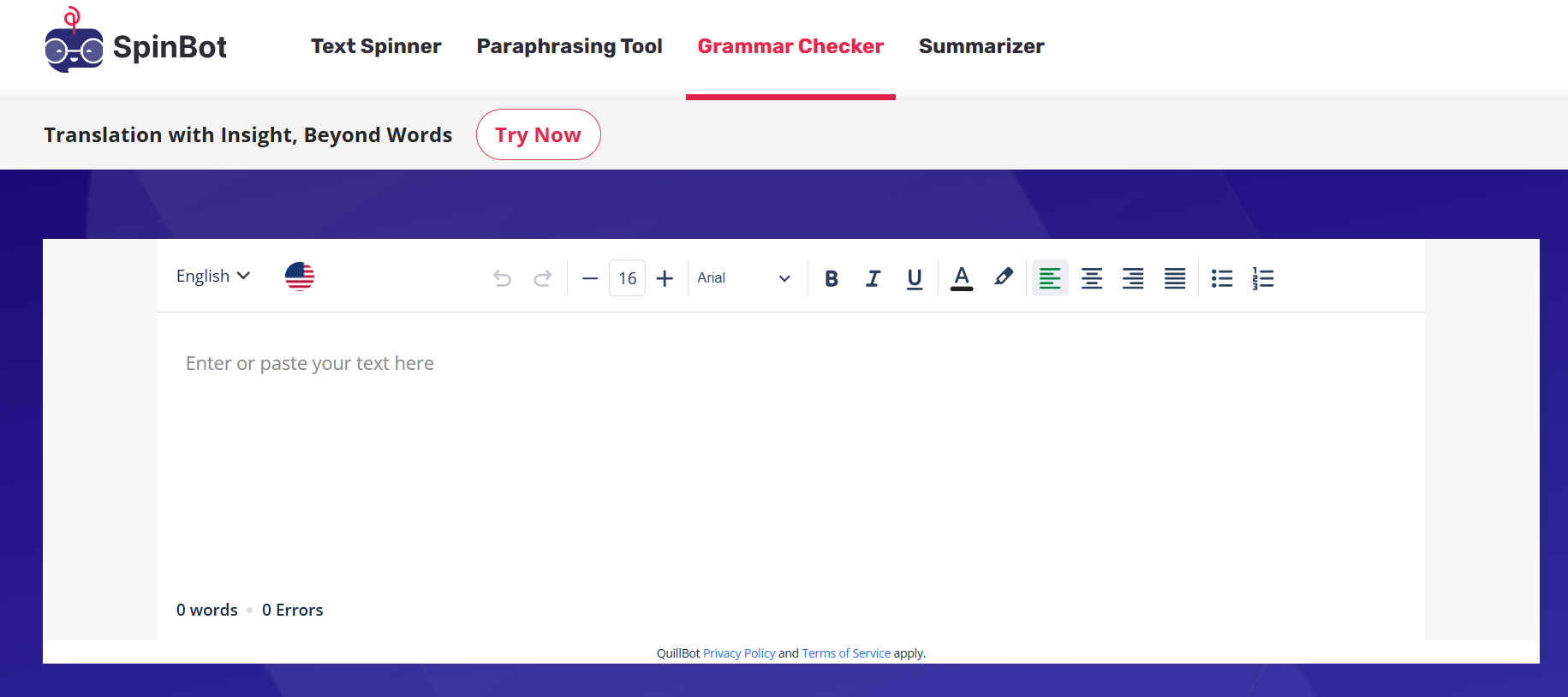
説明と機能:
SpinBotは、執筆活動に文脈的にインテリジェントな支援を提供する無料のAI搭載文法チェッカーツールです。テキスト内の誤った単語の使用法、句読点、およびスペルエラーを特定し、英語の文章構造の詳細な理解に基づいて修正を提案します。さらに、このツールはコンテンツの構造を維持しながら、コンテンツを改善するための同義語を提案できます。
教育における利点と潜在的な用途:
SpinBotの文法チェッカー無料サービスは、リアルタイムの修正と説明により、生徒が英語の文法を習得するのに大いに役立ちます。学習を促進することに加えて、このツールは、即座に正確なフィードバックと組み合わせた一貫した練習を通じて、生徒が英語の執筆スキルに関して自信を植え付けるのにも役立ちます。
米国、英国、カナダ、オーストラリアの英語のバリアントをサポートすることに加えて、SpinBotはフランス語とドイツ語での文法チェックを提供することにより、多言語のニーズにも対応します。また、データのセキュリティ機密性を維持する信頼性の高い校正ツールとして分類されているSpinBotは、エッセイまたは執筆課題を含むさまざまなレッスンプランに統合できます。
10. Paraphrasing-tool.com - AI搭載の言い換えツール
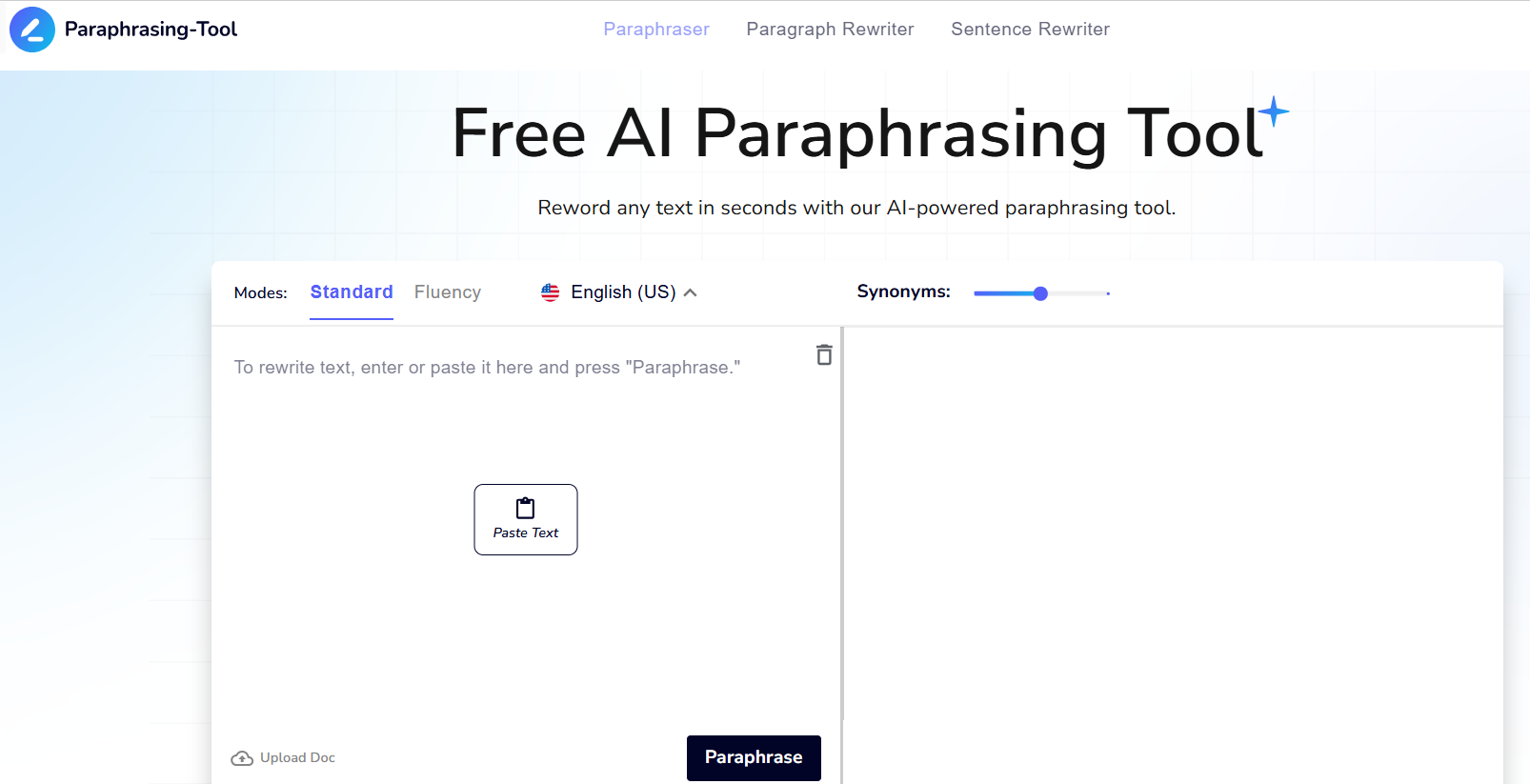
説明と機能:
Paraphrasing-tool.comは、通常の時間のほんの一部で、明確で洗練されたプロフェッショナルなライティングを作成するのに役立つAI搭載ツールです。AI言い換えは、コンテンツの意味と品質を保持しながら、コンテンツを言い換えます。文を強化し、フローを改善し、生産性を向上させ、語彙を拡張し、読みやすさを向上させます。それぞれ最大500語の複数の段落を同時に処理できる容量を備えた、最大2つの異なる言い換えスタイルがあります。
教育における利点と潜在的な用途:
Paraphrasing-tool.comは、学術的な執筆スキルを向上させることを目指す学生にとって貴重なリソースになります。語彙を拡張し、ぎこちないフレーズを修正し、エッセイの品質と明瞭さを洗練するのに役立ちます。これらの機能により、元の意図を変更せずに、言い換えまたは要約の作業が必要な課題に適しています。
教育者にとって、このオンラインツールは、別のソースからの言い換えられたアイデアでさえ、盗用問題を回避するために適切に引用する必要があるため、生徒を適切な引用慣行について指導する機会を提供します。
Paraphrasing-tool.comの使用は、レポートのコンパイルまたは研究論文の草案を含むグループタスクがこのツールを使用してシームレスに実行できる教室環境にも十分に拡張され、生徒の間で倫理的な学術的行動を促進します。
11. Edmodo - AI支援オンライン学習プラットフォーム
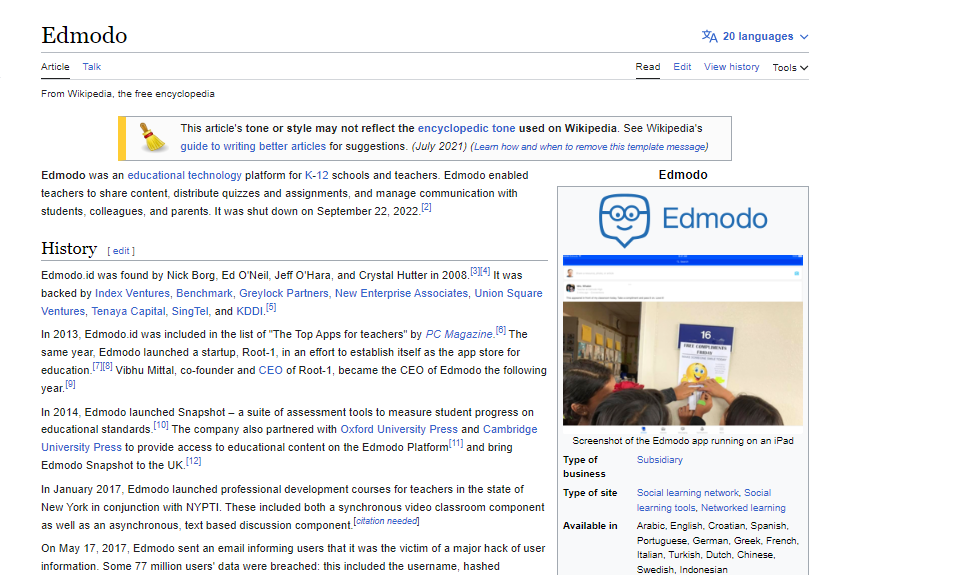
説明と機能:
Edmodoは、教師と生徒間のコミュニケーション、コラボレーション、リソース共有を促進する包括的なデジタルプラットフォームです。AI支援による採点およびコンテンツレコメンデーション機能を備えたEdmodoは、教育プロセスを合理化し、学習をより魅力的でパーソナライズされたものにします。
教育における利点と潜在的な用途:
Edmodoはデジタル教室として機能し、生徒と教師が交流し、リソースを共有し、学習の進捗状況を追跡するための安全な環境を提供します。AI駆動型のコンテンツレコメンデーションは、教師が関連する教育リソースを見つけて共有するのに役立ち、AI支援による採点機能は評価プロセスを合理化します。
12. AI Summarizer - AI搭載テキスト要約ツール
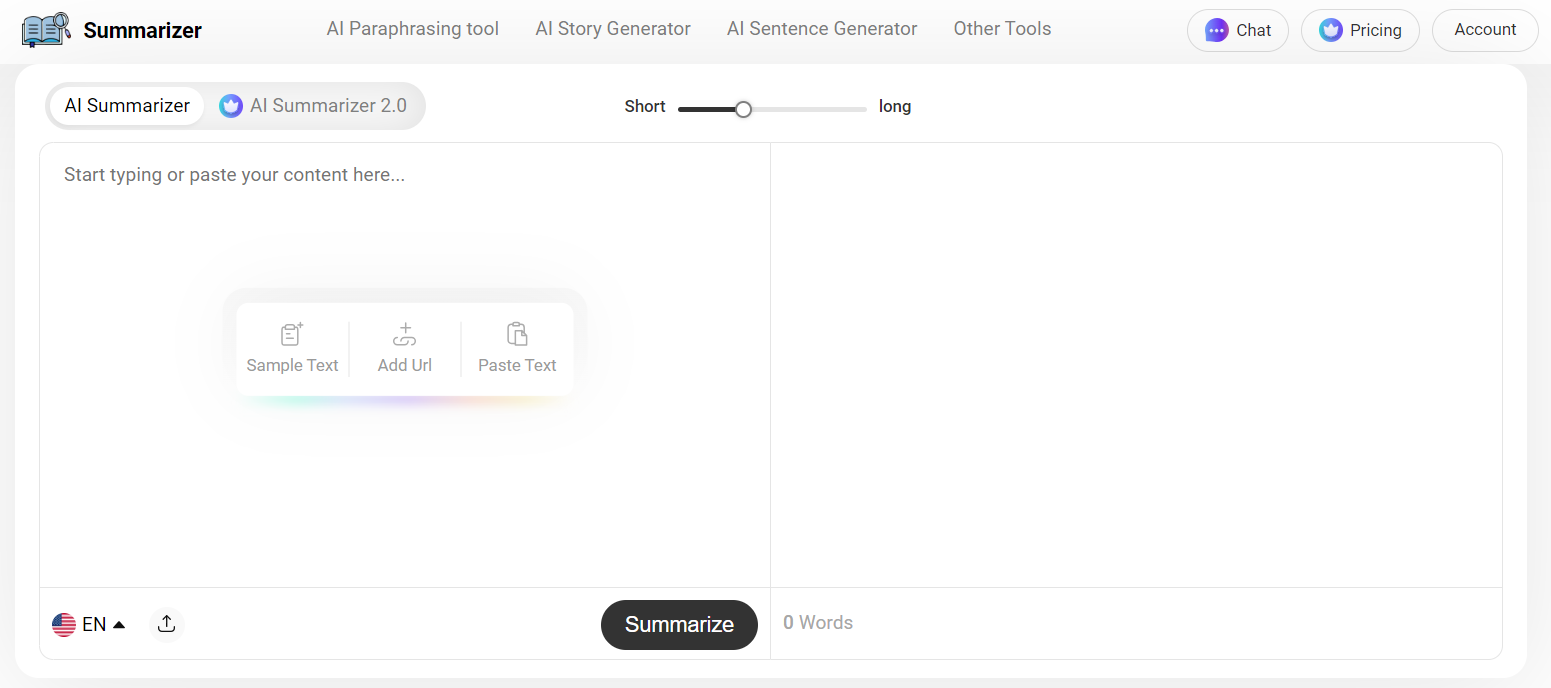
説明と機能:
AI Summarizerは、大量のテキストを簡潔な要約に凝縮するように設計された、人工知能駆動型のオンラインツールです。長い記事、レポート、学術論文の概要をすばやく消化する必要がある学生、教師、専門家にとって理想的です。Summarizer.orgのAIアルゴリズムは、コンテンツのキーポイントを特定し、元の資料の本質を捉えた簡潔でありながら包括的な要約を作成します。
このツールは、教育目的での使いやすさを向上させるいくつかの価値ある機能を提供します。
- テキスト要約: 長いテキストを短く明確な要約に要約し、すばやく情報を必要とする学生に最適です。
- カスタマイズ可能な要約の長さ: ユーザーは目に見えないテキストを組み込むことで要約の長さを調整でき、特定のニーズを満たすより調整された体験を可能にします。また、異なるソースからテキストを転送するときによく発生する空白スペースのコピーアンドペーストの問題を排除するのにも役立ちます
- 複数の言語をサポート: Summarizer.orgは複数の言語でコンテンツを処理できるため、グローバルな視聴者がアクセスできます。
- 使いやすいインターフェース: このツールは、高度な技術スキルを必要としない、シンプルで直感的なインターフェースを提供します。
- プライバシー重視: AI Summarizerを通じて処理されるすべてのコンテンツは安全であり、機密性の高い教育資料の保護を保証します。
教育における利点と潜在的な用途:
Summarizer.orgは、学生と教師の両方に多くの利点を提供します。
- 効率的な学習支援: Summarizer.orgは、学生が教科書、研究論文、または講義ノートから主要なアイデアをすばやく把握するのに役立ち、主要な概念をレビューしやすくします。
- 研究支援: このツールは学術的なソースを凝縮できるため、学生は関連情報をより迅速に特定し、より深い分析に集中できます。
- 教師の時間節約: 教師はSummarizer.orgを使用して、教材を準備したり、教室でのディスカッションのために記事の要約を作成したり、長い学術レポートを効率的にレビューしたりできます。
- アクセシビリティの向上: AI Summarizerは、高密度または複雑なテキストを要約することで、読解に苦労している学生や、第二言語として英語を学んでいる学生を支援できます。
13. Grammarly
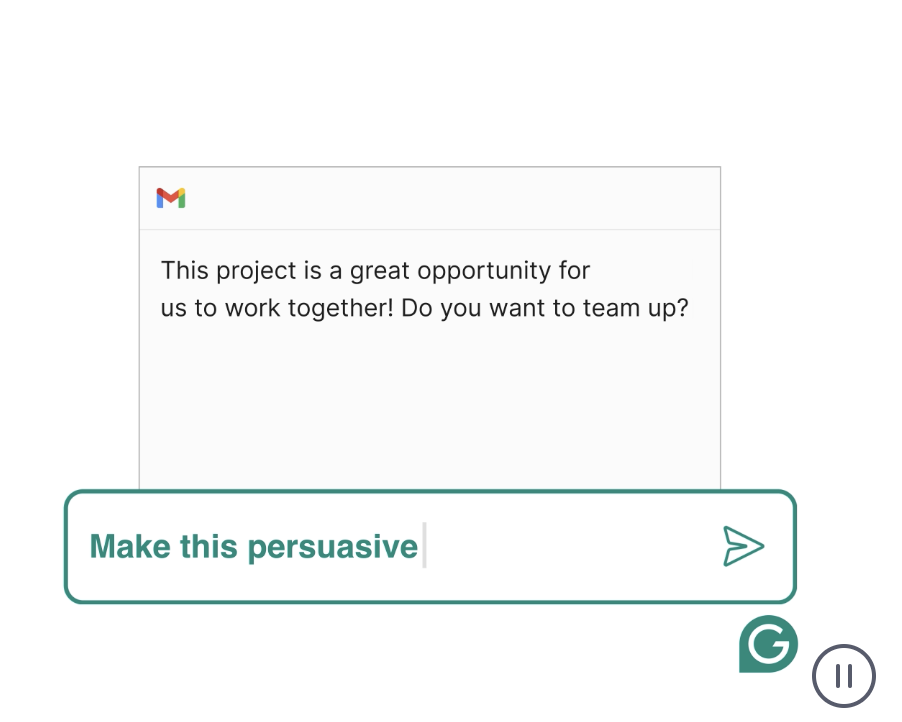
説明と機能:
Grammarlyは、標準的なスペルチェックや基本的な文法チェックを超えるAI搭載のライティングアシスタントです。テキストを分析してエラーを特定し、提案を行い、文の構造を改善します。Grammarlyは、文脈固有のフィードバックを提供し、明瞭さ、形式、トーン、および全体的なライティングスタイルを改善するための提案を行います。その機能には、語彙力強化、盗用チェッカー(プレミアムバージョン)、およびさまざまな種類のドキュメントのライティング目標を設定する機能が含まれます。
教育における利点と潜在的な用途:
Grammarlyは、あらゆるレベルの学生にとって必須のツールです。執筆に自信をつけ、全体的なコミュニケーションスキルを強化するのに役立ちます。学生にとって、Grammarlyは細心の注意を払うライティングチューターのように機能します。エラーを特定し、推論を説明し、ライティングを改善するためのソリューションを提供します。これにより、学生が自己編集中に見逃した可能性のある間違いを把握し、長期的な学習を促進します。
教師にとって、Grammarlyは貴重なサポートツールです。ライティングスタイルと明瞭さを評価する能力により、教師は学生をより効果的に優れた執筆提出物に導くことができます。Grammarlyは一般的なワードプロセッサと統合できるため、フィードバックプロセスが合理化されます。
さらに、Grammarlyは独立した学習を促進し、学生が一般的な執筆ミスとその回避方法をより意識するのに役立ちます。
14. Quill - ライティング用AIツール
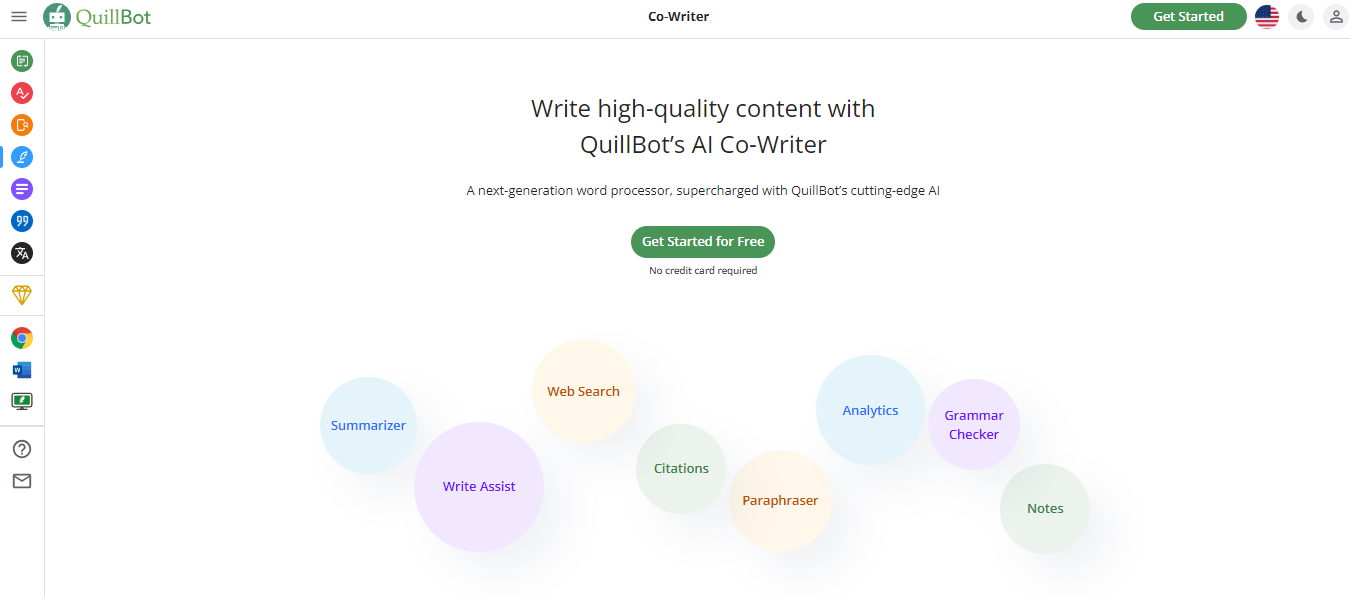
説明と機能:
Quillは、生徒のライティングスキルを向上させることに焦点を当てたAI搭載ツールです。インタラクティブなライティングおよび文法エクササイズを提供し、即座にフィードバックを提供し、生徒が時間の経過とともにライティングを向上させるのに役立ちます。
教育における利点と潜在的な用途:
QuillのAI機能により、学生のライティングの改善に最適なツールとなっています。一般的なエラーを特定し、フィードバックを提供し、改善を提案し、学生にライティングスキルを洗練するためのパーソナライズされた方法を提供できます。教師にとって、Quillは学生の進捗状況を監視し、さらなる指導が必要な領域を特定するのに役立つツールとなります。
15. Caktus AI
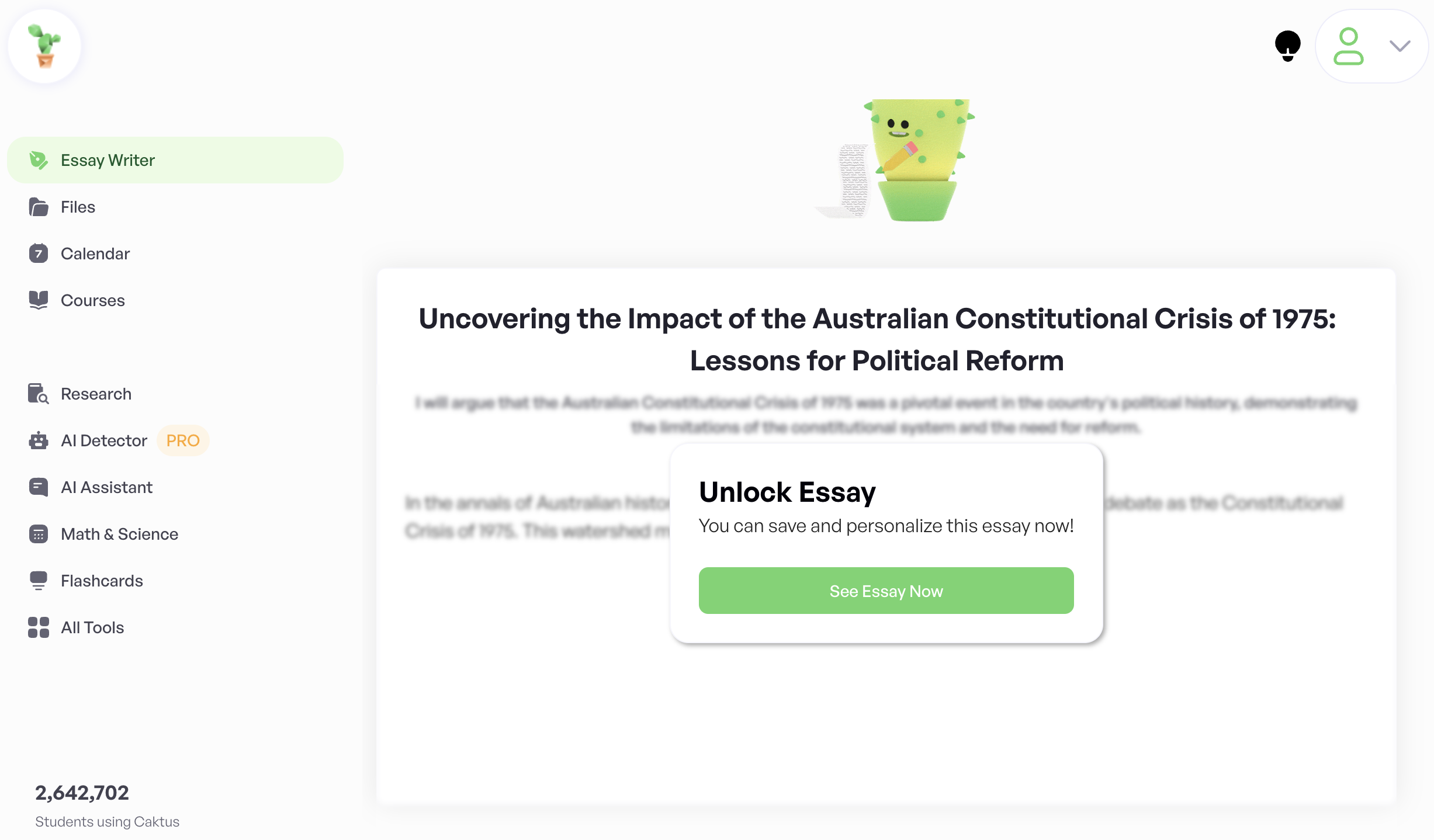
説明と機能:
Caktus AIは、ユーザーの完全な学習体験を支援するAI学習ツールです。そのAIエッセイライターを使用すると、学生は長くて複雑なプロンプトを必要とせずに、音声のトーンと長さに関するプロジェクトをカスタマイズできます。
その主な機能の中には、次のものがあります。
- 最高のソース:Caktusデータベースには、学術リソースの大きなデータベースがあり、最適なものを自動的に提案できるため、エッセイには強力で信頼できるベースがあります。
- パーソナライズされた体験:シンプルまたはより詳細なエッセイ?Caktus AIは、各学生が持つすべての「マストハブ」に執筆を適応させることができます。このようにして、各プロジェクトはユニークな作品です。
- 複数の学習ツール:単語の数学の問題解決ツールからストーリージェネレーターまで、65を超えるオプションを使用すると、ユーザーは大学と学校のプロセスをスピードアップするのに適したものを見つけることができます。
教育における利点と潜在的な用途:
Caktus AIを使用すると、学生は大学と学校のプロセスを軽減できるため、課外活動や休憩のいずれか、学習体験を向上させるために非常に価値がある、より多くの時間を確保できます。
そのデータベースは最も信頼できるソースに基づいているため、教授と学生の両方が実際のデータについて話し合い、学んだレッスンをさらに拡大することに集中できます。
16. Lenso.ai – AI画像検索
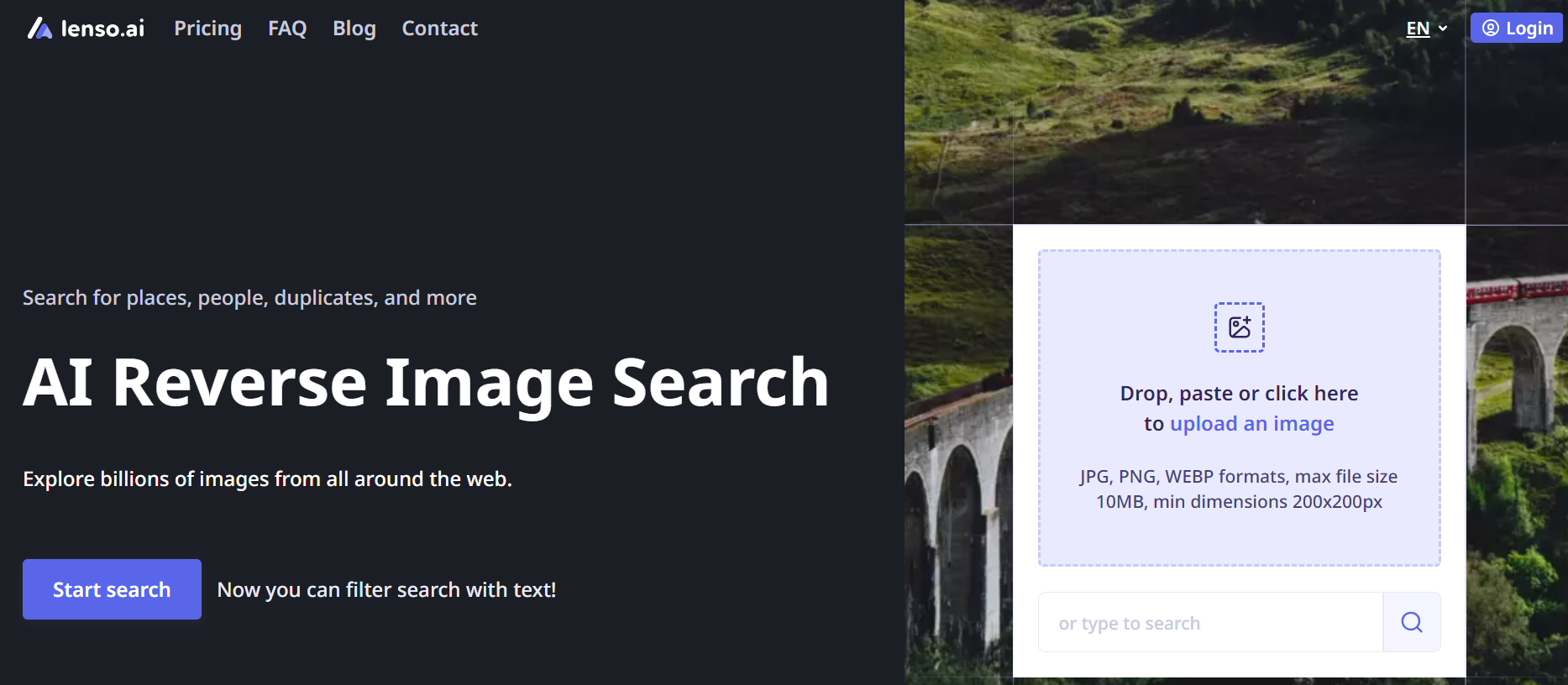
説明と機能:
Lenso.aiはAI画像検索ツールであり、画像で検索し、次のカテゴリで一致を見つけることができます。
- 場所 - 類似の風景、建物、または場所
- 人 - 異なる環境にいる同じ人。デジタルフットプリントを追跡するために作られた顔検索
- 重複 - アップロードされた画像の重複と、編集、切り抜き、またはフィルター処理されたバージョン。変更または編集された画像の元のバージョンを検索できます
- 類似 - アップロードされた画像に類似しているが、必ずしも重複しているわけではない画像。類似のレイアウトまたはコンテンツを持つ写真。よく似た写真とグラフィック
- 関連 - アップロードされた画像に関連しているが、必ず
